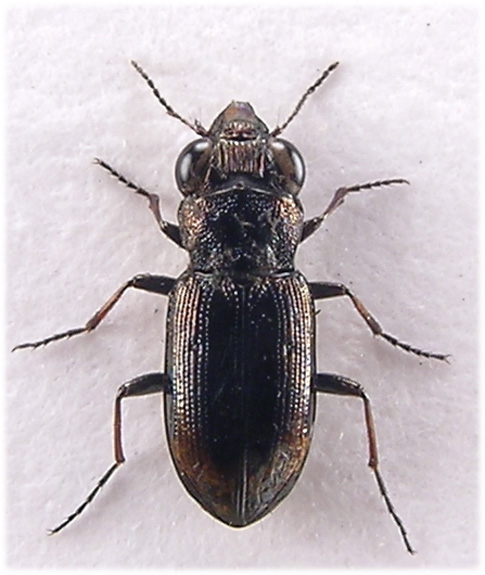
Generically very distinctive and will not be confused with any other, parallel sided and strongly metallic species with huge eyes and strigulose frons. Biguttatus is common everywhere and will soon turn up in pitfall traps; Some Notiophilus are difficult to ID but the present species is distinctive and provides a good introduction to the genus.
5-6mm. With strong brassy or rarely bluish lustre. Frons shining anteriorly with six longitudinal ridges (7 or more in N.quadripunctatus DJ.) centrally and oblique lateral ridges parallel to inside of eyes. Posteriorly dull, strongly contrasting with ridged area. Pronotum strongly punctured (N.substriatus Wat.), clearly sinuate and bordered laterally, hind angles sharp. Second elytral interval more than three times wider than third, fourth interval about the same as third and wider than fifth (in N.quadripunctatus wider than both adjacent intervals). All intervals shining, about the same as second (N.substriatus) fourth interval with single large punctures before middle and subapically. Apical area with ill-defined broad pale mark, variously extending laterally to middle (,N.rufipes curtis), this becomes a good field character with a little experience. Femora and tarsi metallic black, tibiae red, infuscated apically (N.rufipes).
¹ Anderson, J. M., 1972 Food and feedng of Notiophilus biguttatus. F. Revue d'Ecologie et de Biologie du Sol, 9.177-84
Description from 4 Watford specimens at X20 See ID Aids for Key to all British Notiophilus
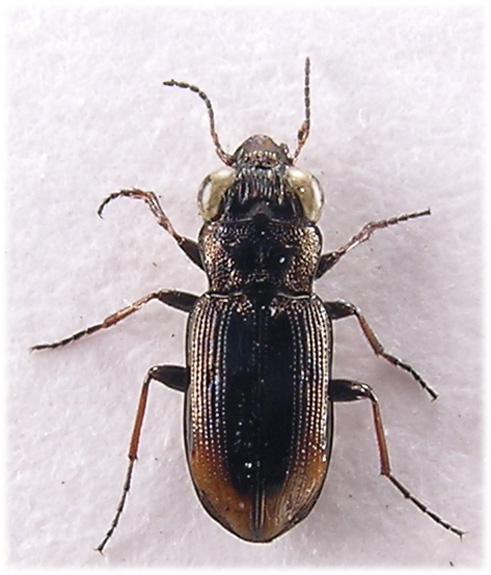
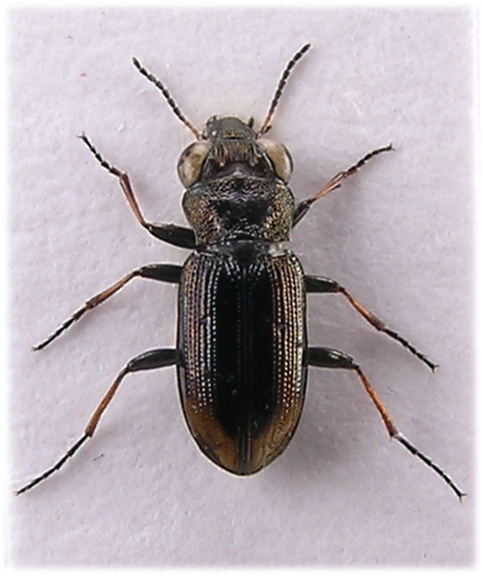
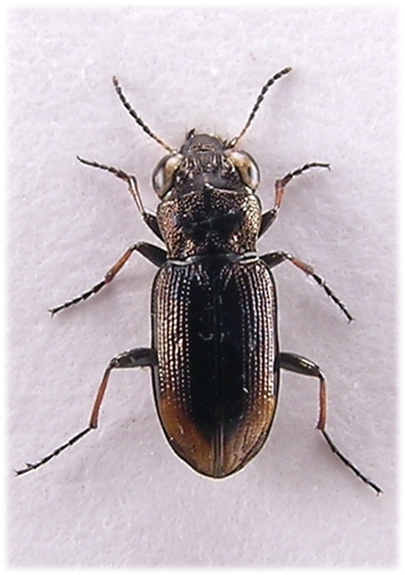
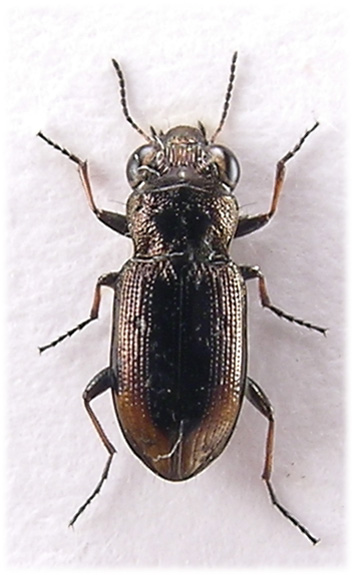
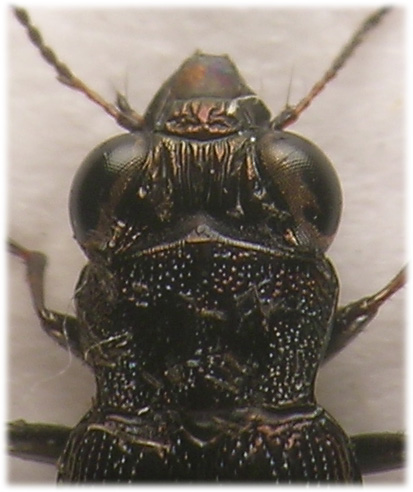
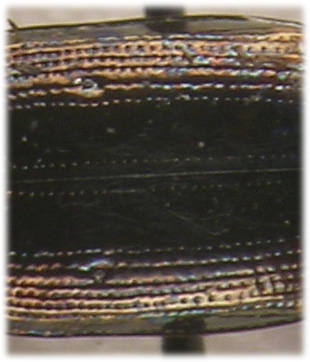
Home